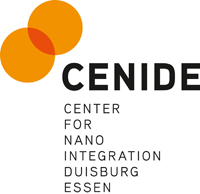Research Project 6
Synthesis of complex nanomaterials on a pilot-plant scale
The gas-phase synthesis of nanoparticles enables the continuous production of highly-specific materials and the process technology offers the opportunity large, industrial scale production. The basis for a successful scalability towards a production process is a knowledge-based approach using validated models. A better understanding of the reaction technique is achieved in particular by the combination of non-intrusive in-situ diagnostics with the numerical description of the balance and material equations for material, momentum, substances and enthalpy.
Based on the successful attempts concerning the transfer of conditions for the synthesis for silicon and iron oxide nanoparticles from the laboratory scale to the pilot scale, the second funding period aims to also realize this with regard to the further processing of the materials in the gas phase. Based on the design rules of the FOR 2284 established so far and supported by fluid dynamic modeling, the coating of nanoscale materials and the formation of complex nanoparticle structures will be transferred to pilot scale gas phase reactors. The focus is on the targeted synthesis concerning the shape, degree of aggregation, and morphology of nanoparticles. In particular, the uniform coating of particles in the gas phase requires a fast and homogeneous mixing of particles and secondary (coating) precursor. The particular challenge will be to adequately describe the effects resulting from the (quadratic) scaling of the cross-sectional areas with the support of numerical methods (TP9, TP8). Together with the lab-scale experiments in TP3 and TP5, this will be applied to develop process technologies for a targeted structuring of nanomaterials on a pilot scale.
In addition to the above-mentioned questions, the synthesis of FexOy nanoparticles in the flame reactor will also be pursued with emphasis on the directed production of various polymorphic forms of iron oxide on the pilot scale (analogous to design rules from TP4). In order to achieve a stable long-term production of nanoparticles, backflow and unwanted deposition of particles must be prevented. To this goal, the flow configuration of the reactors will be designed together with results from optical in-situ measurement techniques (TP7) and supporting modeling (TP9).
Project management
Dr.-Ing. Sophie M. Schnurre
Institut für Energie- und Umwelttechnik e.V., Duisburg
Phone: +49 2065 418-302
E-Mail: schnurre@iuta.de
http://www.iuta.de/index.php?article_id=354
Dr. Hartmut Wiggers
Universität Duisburg-Essen
Fakultät für Ingenieurwissenschaften
Tel.: +49 203 379-8087
E-Mail: hartmut.wiggers@uni-due.de
https://www.uni-due.de/ivg/rf/



